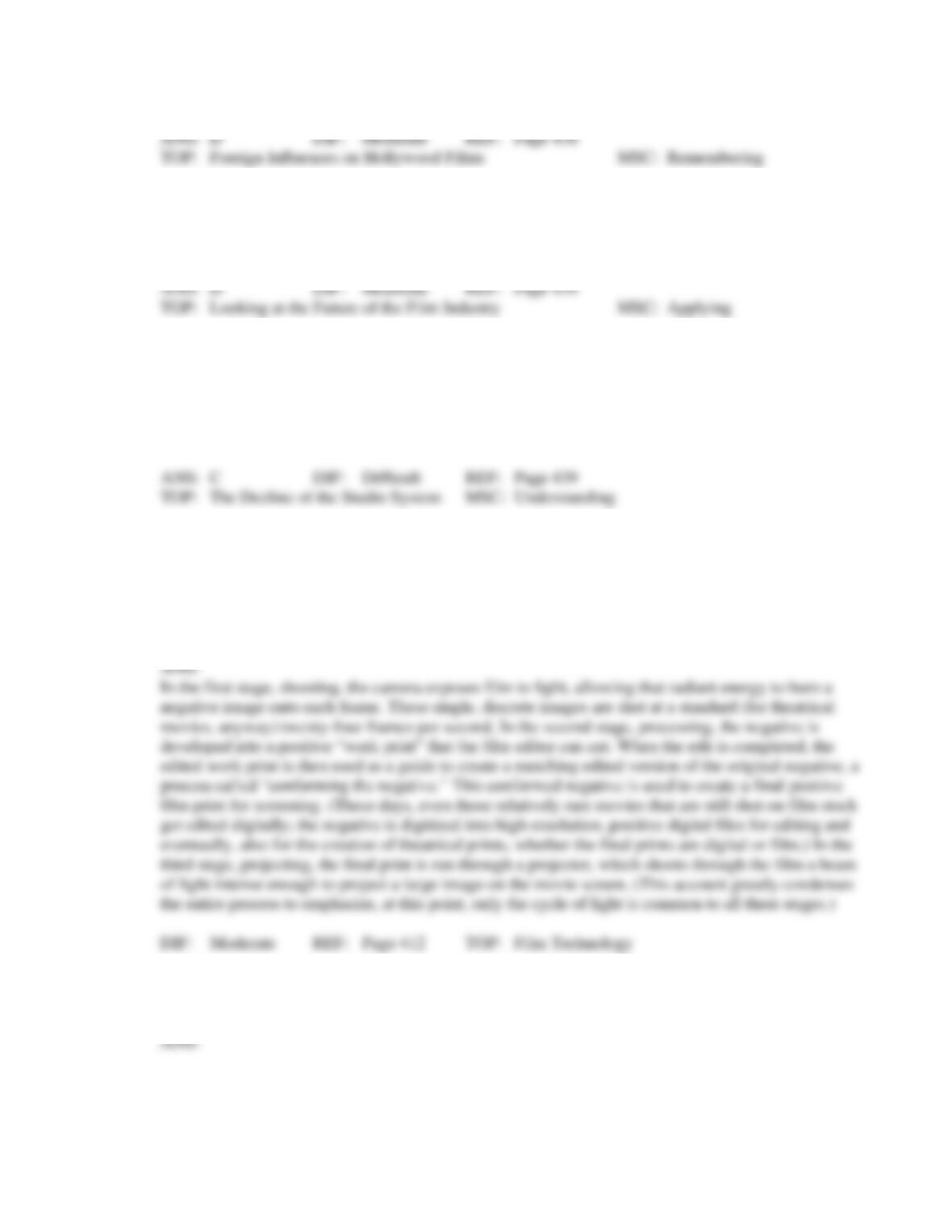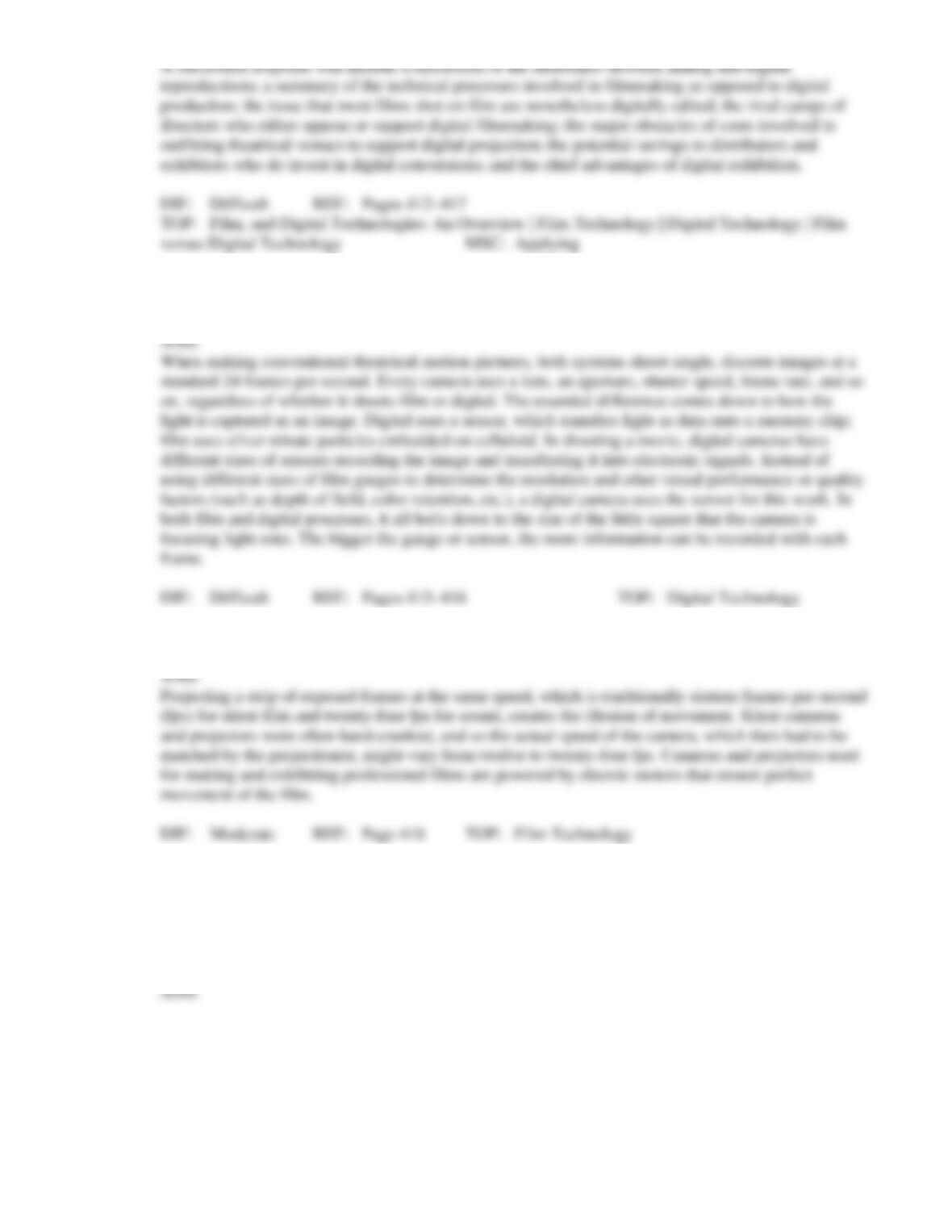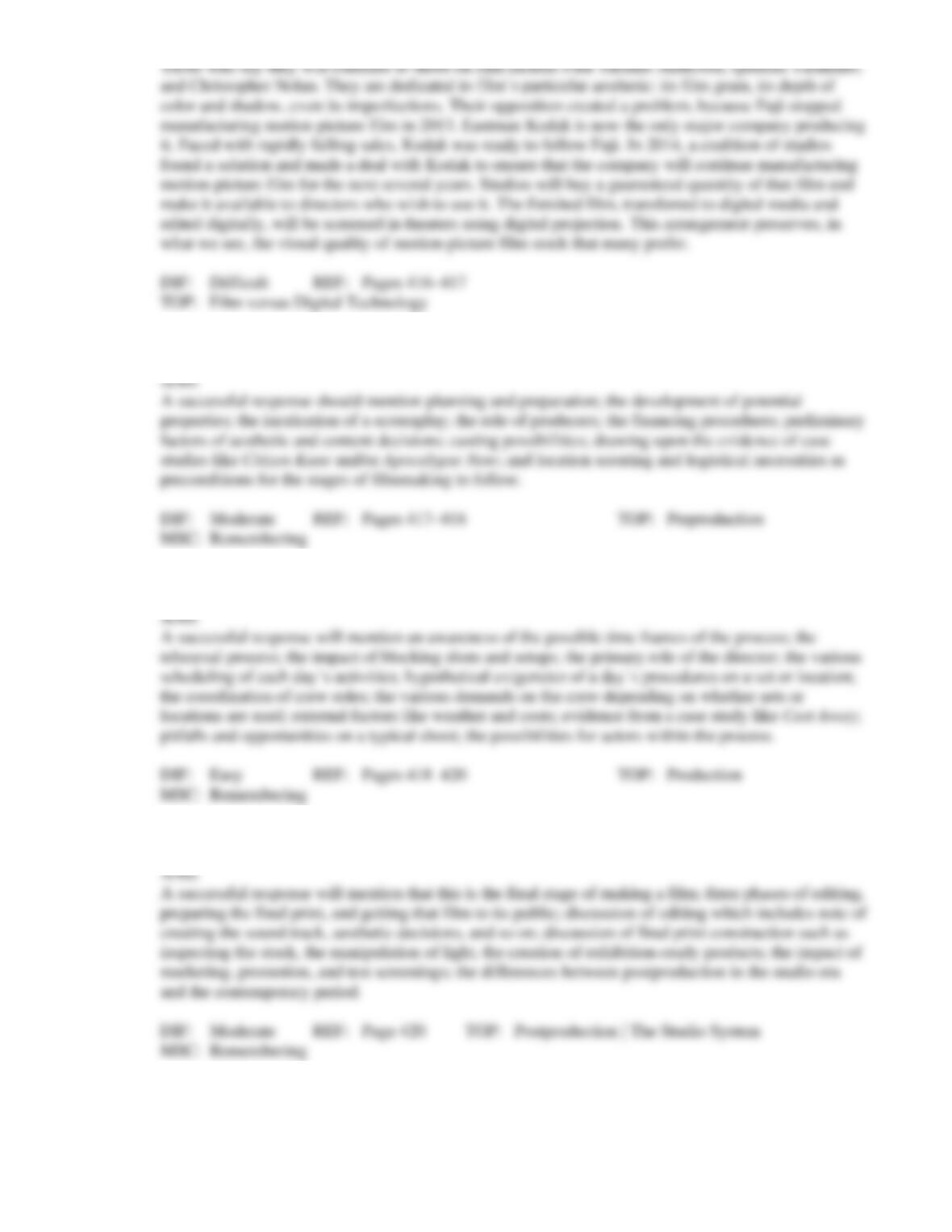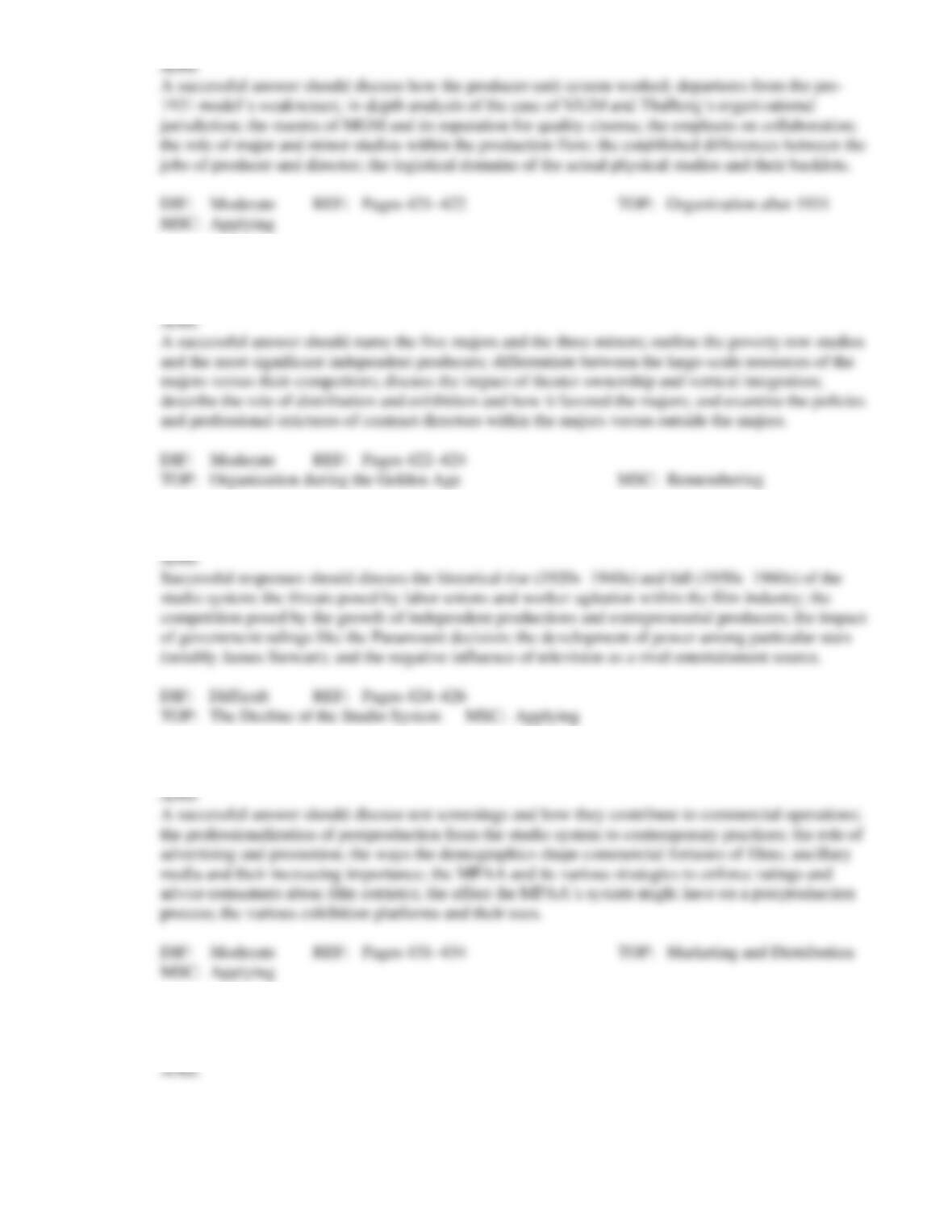b. cinematographer e. actor
c. editor
25. Under the producer-unit system at MGM, a general manager would
a. liaise with subordinate managers to control the production process.
b. be on-set every day to supervise the shoot.
c. coordinate business practices with other studios.
d. inspect film stock to maintain print quality.
e. report daily to the executive manager.
26. By the mid-1930s, the five major studios were
a. Paramount, MGM, Warner Bros., 20th Century Fox, and RKO
b. Paramount, MGM, Warner Bros., 20th Century Fox, and Universal Studios
c. Paramount, MGM, Warner Bros., 20th Century Fox, and Columbia Pictures
d. Paramount, MGM, Warner Bros., 20th Century Fox, and United Artists
e. Paramount, MGM, Warner Bros., 20th Century Fox, and Republic Pictures
27. A vertically integrated studio controls
a. production, distribution, and exhibition.
b. only production and distribution.
c. only production and exhibition.
d. only distribution and exhibition.
e. only production.
28. Which of the following best describes MGM?
a. It was a poverty row enterprise.
b. It is no longer in existence today.
c. Irving Thalberg was a senior executive there.
d. It was the largest of the majors.
e. Its backlot was so small that it had to lease soundstages from other studios.
29. Which of the following statements is true about United Artists?
a. Charles Chaplin was one of the founders.
b. Daryl F. Zanuck ran production from 1933 until 1956.
c. It was a major studio.
d. It was established to give artists less control over how their movies were distributed and marketed.
e. It was part of MGM.































